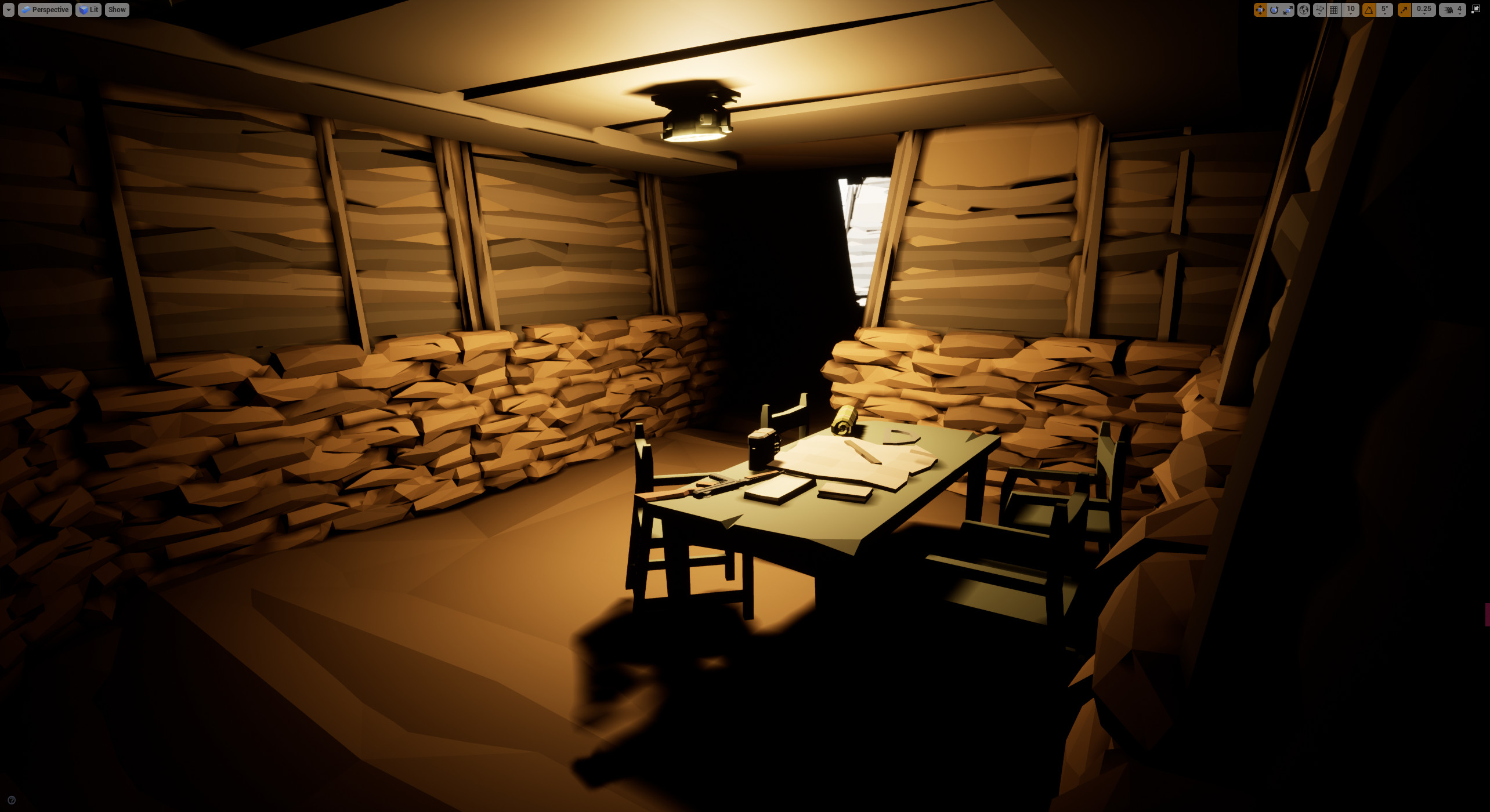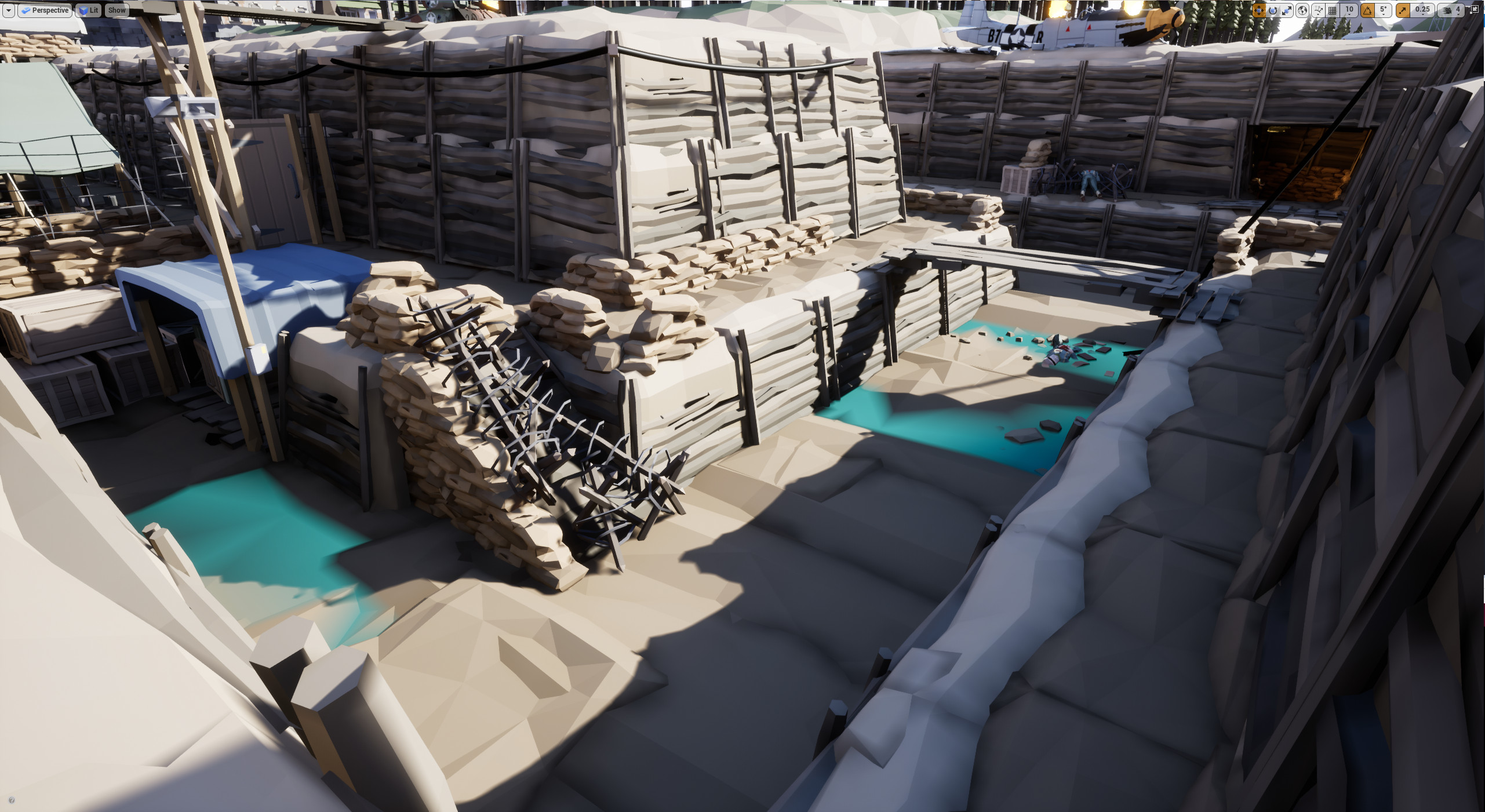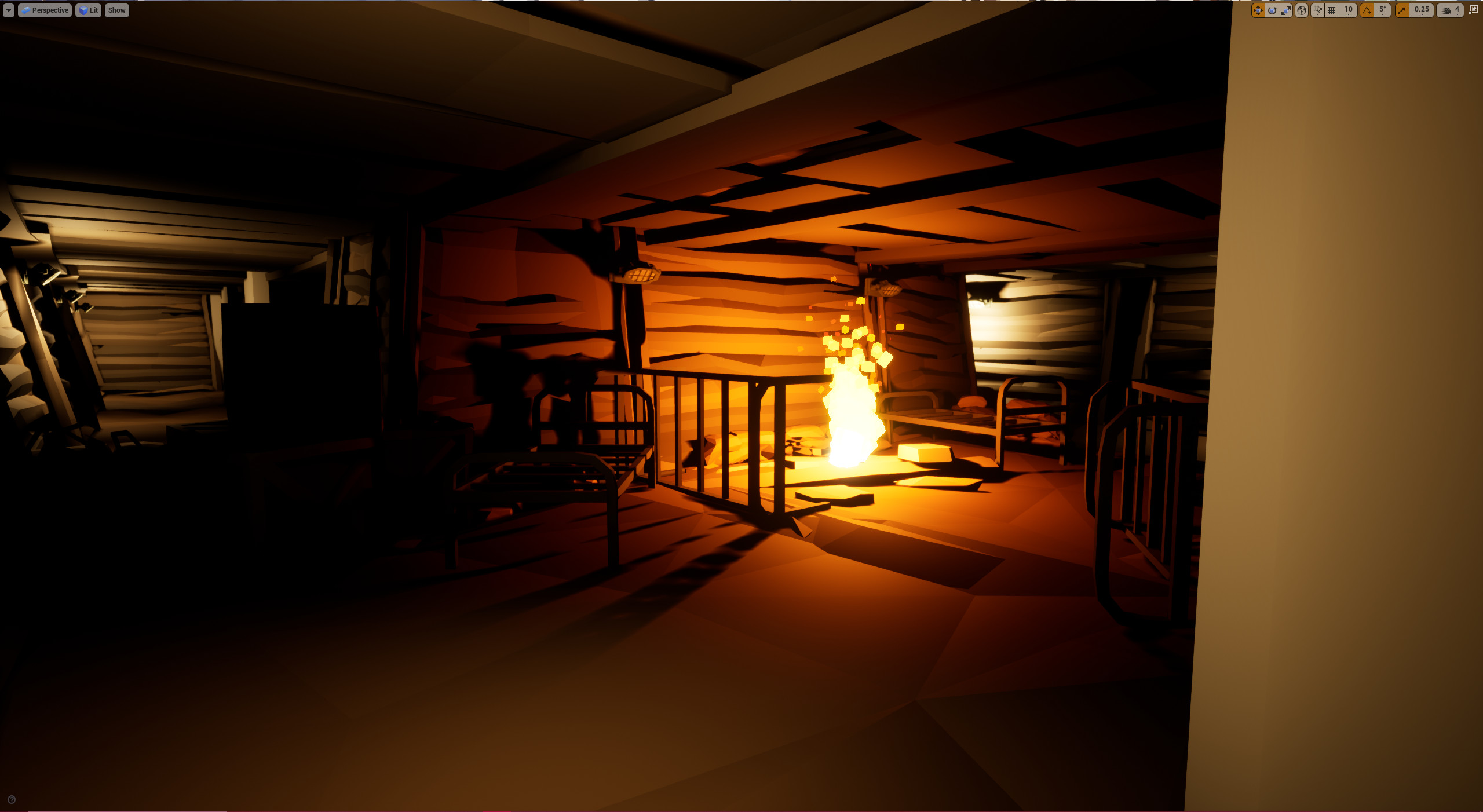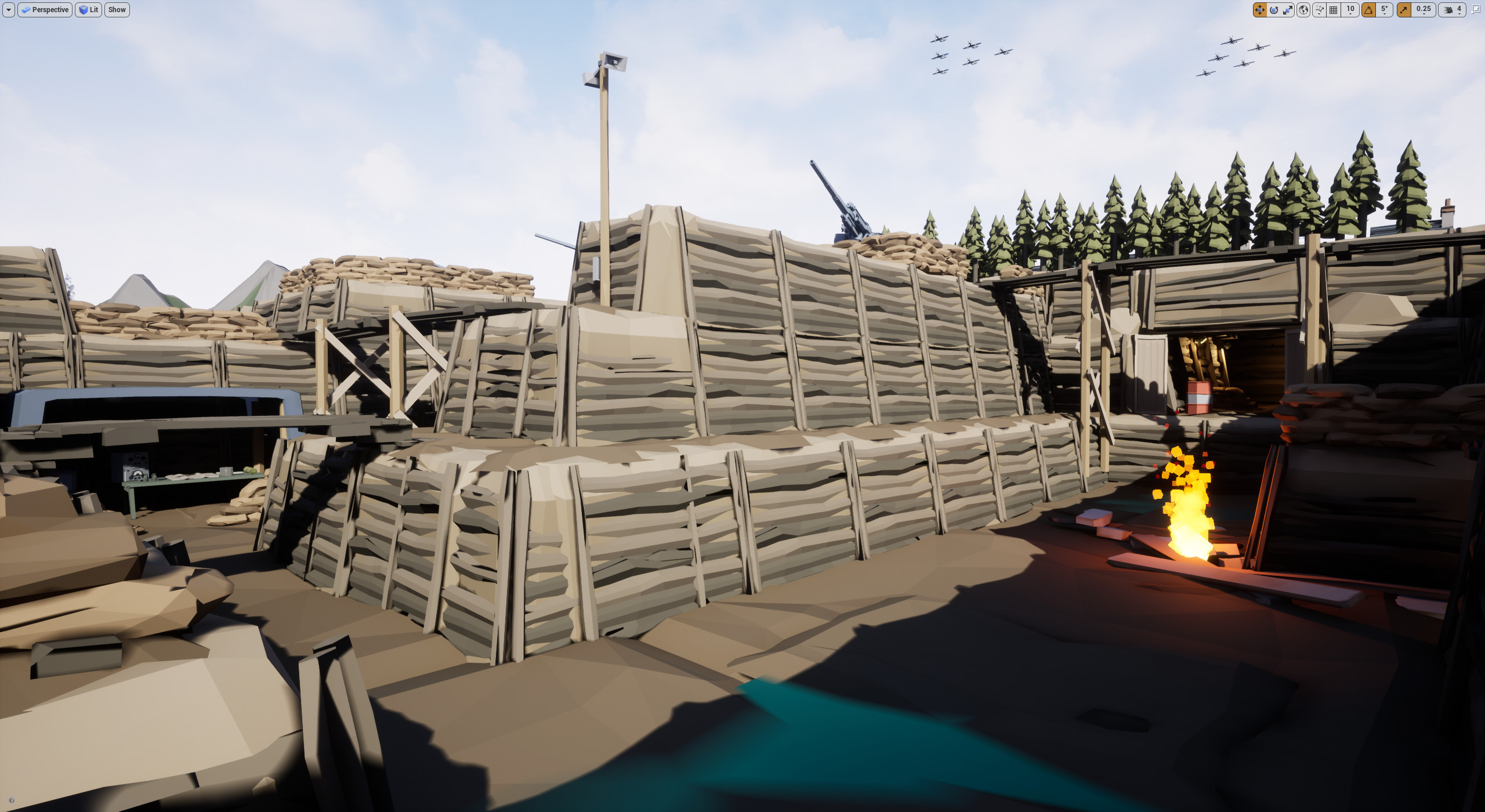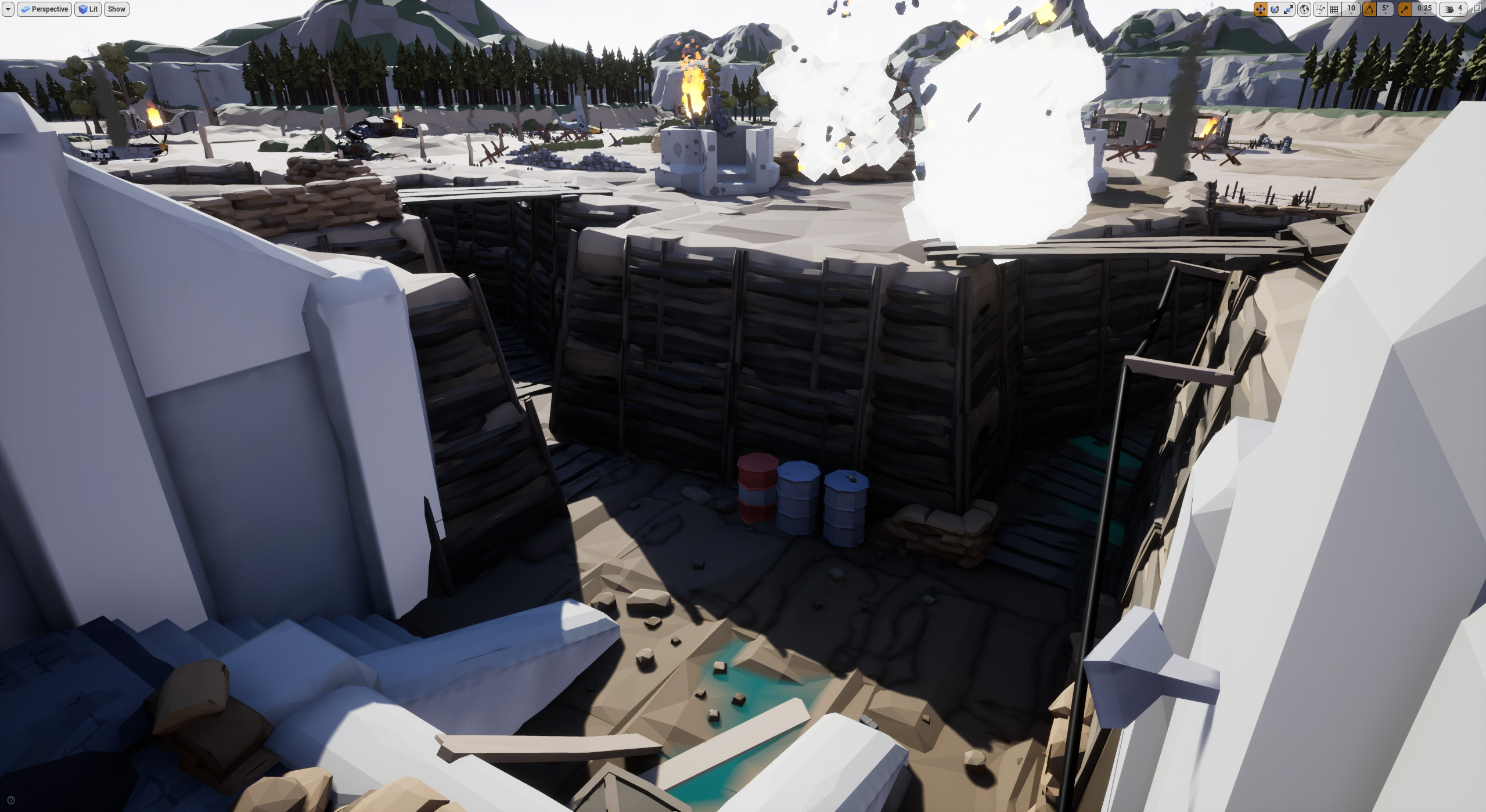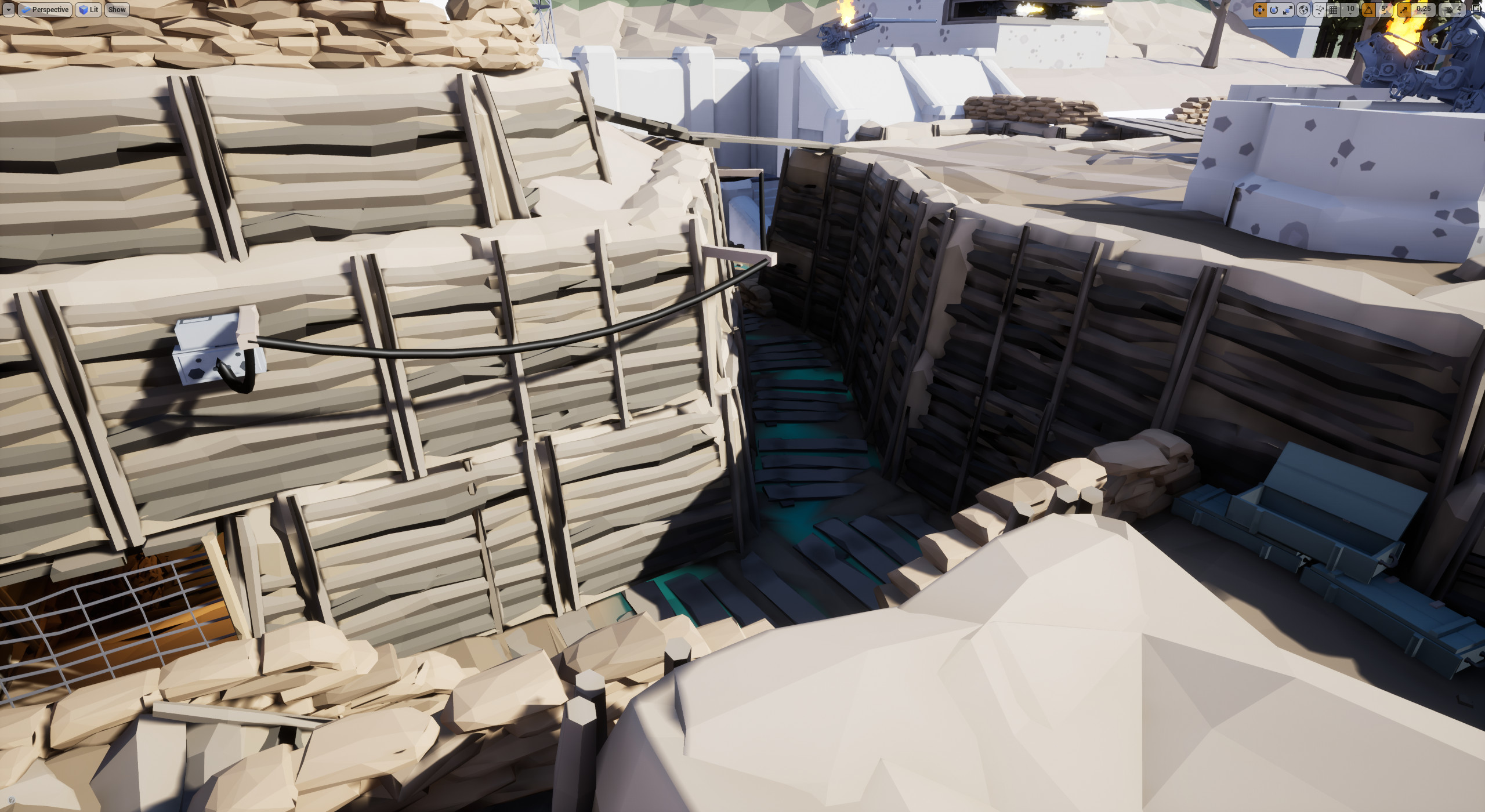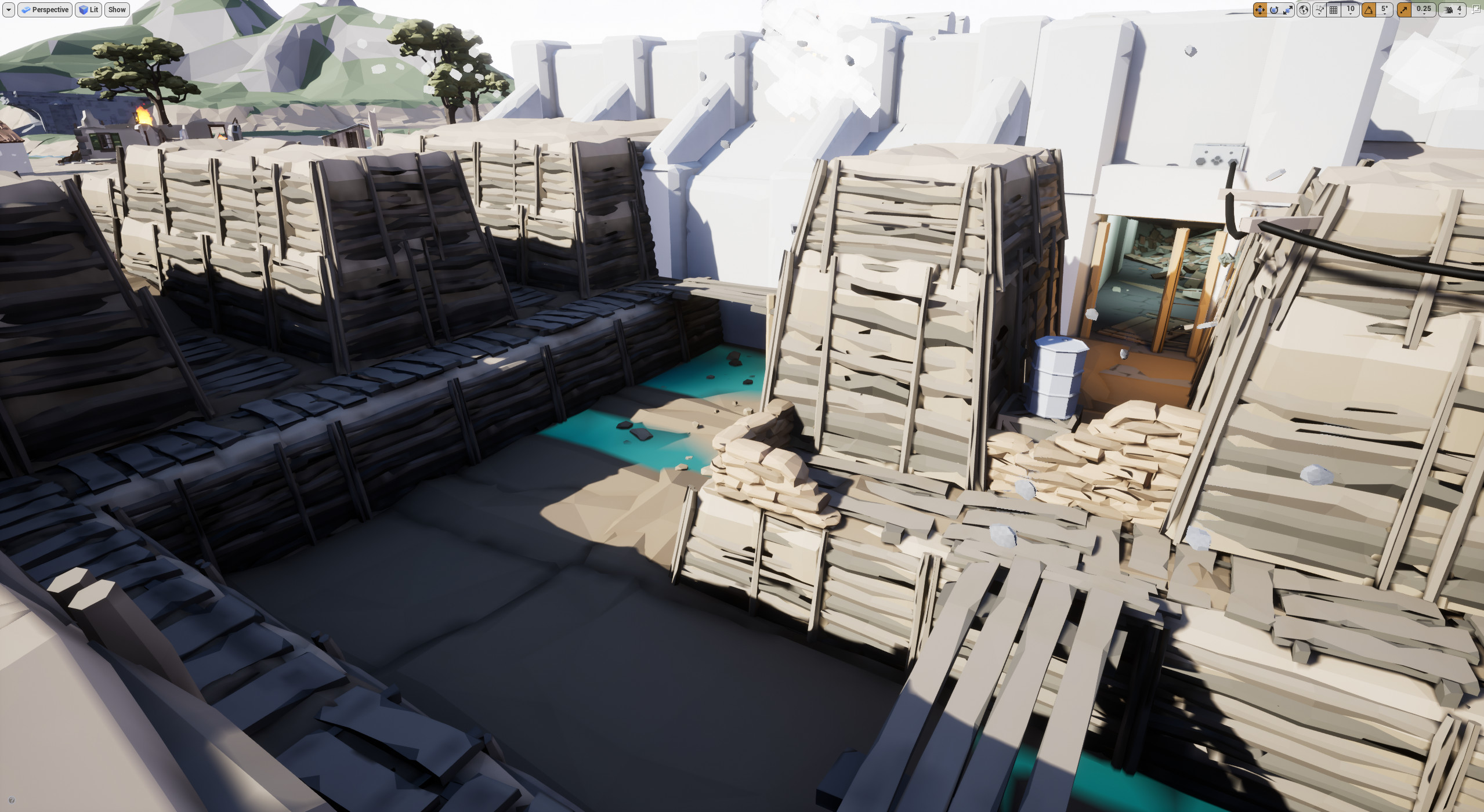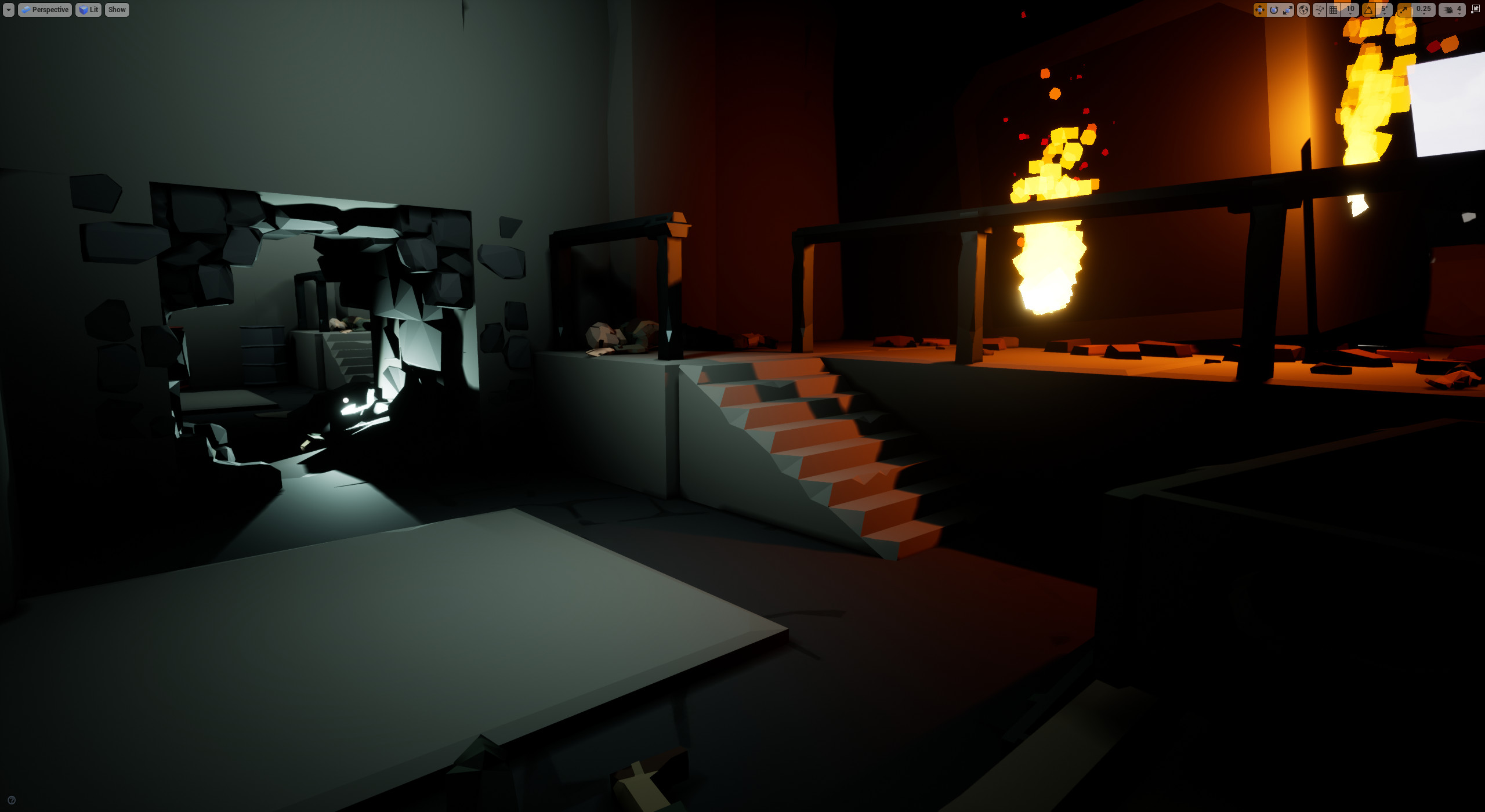Frontline - FPS Game/Level Design (UE4)
A video walkthrough of the main and sub menus as well as the victory screen.
Frontline - FPS Game/Level Design (UE4)
A small (single level) first person shooter developed using the Unreal Engine 4 and its FPS Template. This project was made for a school assignment meant to introduce students to using blueprints and the Unreal Engine and was my first project using the Unreal Engine 4.
The player fights their way through a trench system on a battlefield attempting to retreat into the village behind the trenches. Enemies attack the player from within and above the trench while the player needs to unlock sections to proceed to the exit. This was my first solo project using Unreal Engine 4.
The project was completed over the course of four weeks. The first week was dedicated to the geometry blockout while the second week saw most of the gameplay implementation. Week three was used to implement the art and polish/bug-test the gameplay while the final week focused on the UI and menu implementations.
The environmental models and most materials/textures were produced by Synty Studios (Polygon War! Asset Pack).

